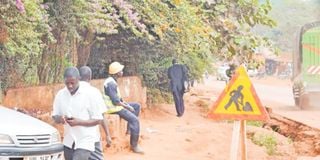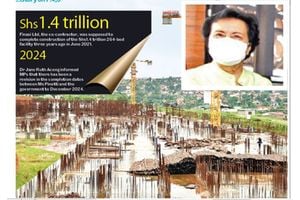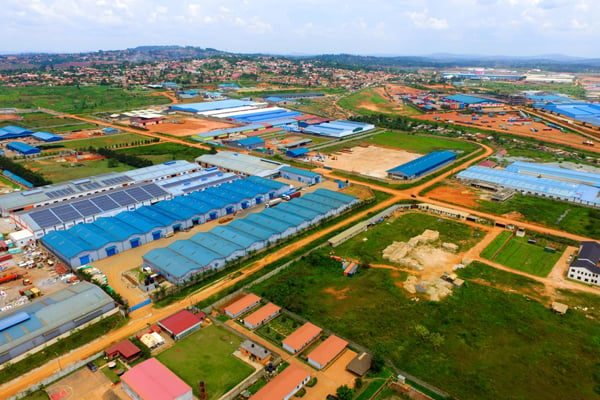
Several roads in Kampala and its suburbs are under rehabilitation, while some are under construction. These include Port Bell Road from Nakawa on Jinja Road to Luzira, sections of Old Port Bell Road from Bugolobi that join the new Port Bell Road from Nakawa, Kiira Road from Najjeera to Bulindo and Industrial Area with places around Namuwongo, among others.
Allan Ssempebwa, the communications officer at Uganda National Roads Authority (UNRA), says Uganda is largely a construction site. There are different road projects under implementation, both bridges and roads under maintenance across the country in different regions.
“In total, UNRA has approximately 23 road projects that are being implemented and undergoing upgrading from marrum to gravel or from marrum to tarmac. Other roads are under rehabilitation. There are also roads under the gravel network that are under maintenance,” he says.
Watch out for open ditches
During road construction, there are normally deep excavations, especially when creating drainage channels such as the one around Shell Bugolobi in Kampala. These excavations normally lead to soil disintegration, creating not only ditches but also leaving behind disintegrated soil with a soft surface.
“Some of these ditches are covered while others are not. Some are cordoned off with tapes and some are not because the markings are sometimes not enough. When it rains, these ditches will be covered with water. Follow the routes open to traffic and desist from creating extra lanes,” warns Moses Walugembe, a traffic marshal on Old Port Bell Road.
Follow road signs
At construction sites, you are always asked to reduce and maintain your driving speed to between 30km to 40km/hour. This is because there are all kinds of hazards such as temporary road humps, workers on site, concrete mixers or trucks, graders excavating drainages, and compacters, among others. There will also be signposts indicating that the road is closed where all traffic in a construction zone has to share the available road space.
Many things could distract your focus on the road. One of these could be driving while using the phone or even the occupants in the car. If you are tired, it is advisable to rest before sitting behind the steering wheel.
“Most construction zones are barricaded with yellow or red tape and in most cases, there are building box culverts and drainage systems. Without focusing on the road, you may drive into a drainage under construction. Also being observant ensures that you will be able to see all the signposts, including those warning you of a construction site ahead,” Ssempebwa explains.
Soft surfaces
Wherever there are road construction sites that are seemingly hazardous to motorists, diversions are always created to guide traffic flow. An example is the diversion on Masaka Road where the Kampala to Mpigi expressway is under construction. There, traffic was diverted through Mpigi Town because spots that are being worked on are always cordoned off to traffic and the diversions are on the same roads. This means you will be diverted to a temporary lane.
“Workers may be laying tar, making it impossible for your car to drive through. Also note that whenever you see a barricaded lane at a road construction zone, it is not free. In most cases, construction materials that have been cast are curing and are not ready for use,” Ssempebwa advises.
Respect traffic marshals
Traffic police personnel are sometimes not deployed around road construction sites. This means that traffic flow could be manned by traffic marshals who work for construction companies. Sometimes, these marshals, under guidance from the contractor, close off one lane and both incoming and outgoing traffic share one lane in a controlled and guided manner.
This calls for a lot of patience until it is your turn to use the open lane. The outcome of your impatience would be blocking traffic that has been cleared to move or at worst, colliding with vehicles in the shared lane.
Turn on your fog lights
Like driving in the rain, turning your fog lights or daytime running lights on while driving through construction sites ensures your car is visible to other road users. Note that road construction sites are characterised by clouds of dust raised by moving cars or even strong winds.
Avoid construction zones
According to linkedin, an online portal, the best way to avoid long delays, frustration and the potential for an accident is to avoid construction zones whenever possible. The portal advises that if a road construction site is unavoidable, drivers should allow extra time in their schedules in case there are traffic delays.
“Every safe driver has a responsibility to exercise caution and good judgment in road construction sites. Consideration for the safety of construction workers and other motorists can help turn highway/road construction sites into safe zones for everyone,” the portal states.



